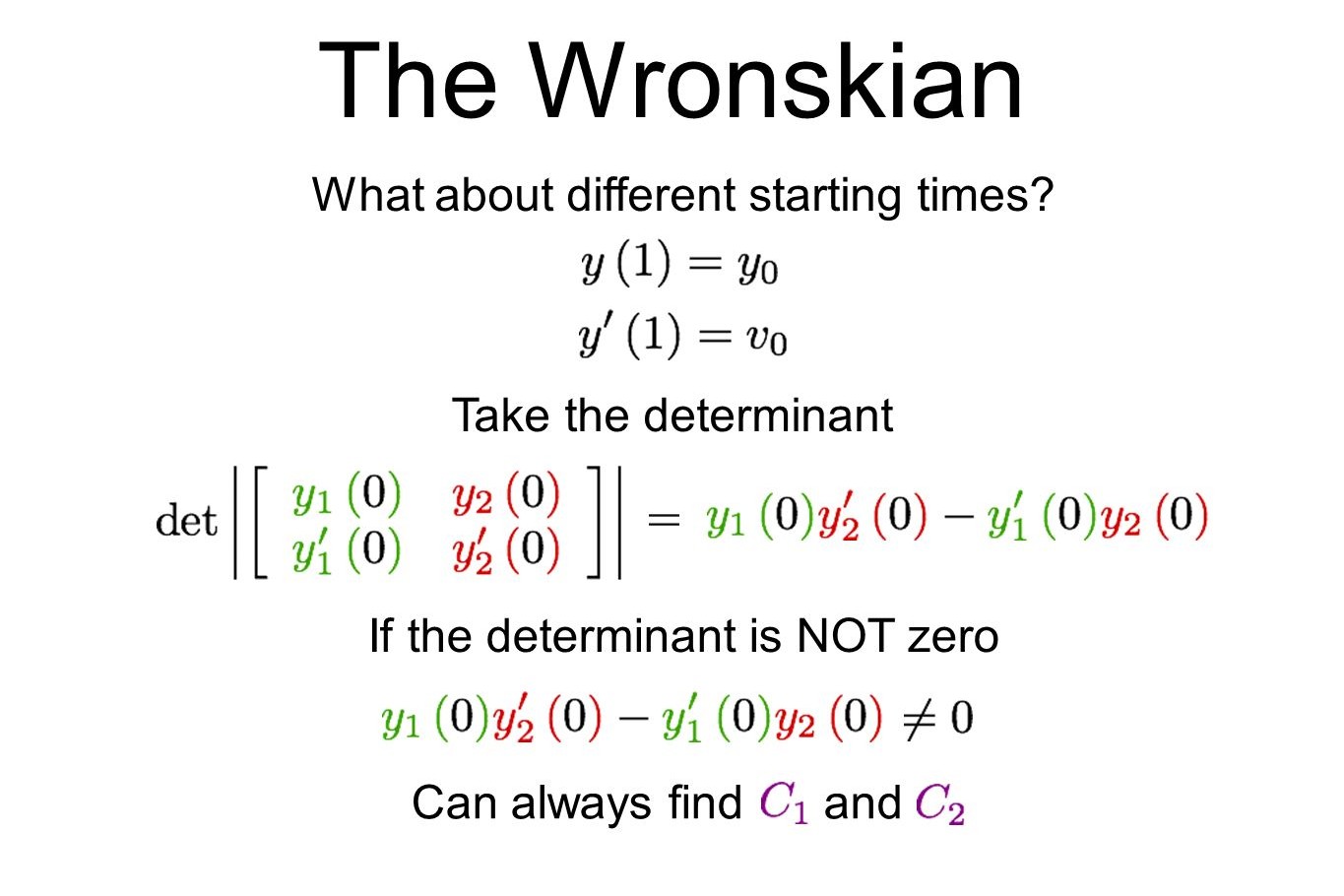
What is the Wronskian? The Wronskian is a determinant used in mathematics to determine if a set of solutions to a differential equation is linearly independent. Named after the Polish mathematician Józef Hoene-Wroński, this tool plays a crucial role in the study of differential equations. Imagine you have multiple functions, and you want to know if they are independent or if one can be written as a combination of the others. The Wronskian helps answer that. If the Wronskian is zero, the functions might be dependent. If it's non-zero, they are definitely independent. This concept is vital for anyone diving into advanced calculus or differential equations. Understanding the Wronskian can make solving complex mathematical problems much more manageable.
What is the Wronskian?
The Wronskian is a determinant used in the study of differential equations. It helps determine whether a set of solutions is linearly independent. Named after the Polish mathematician Józef Hoene-Wroński, this concept plays a crucial role in mathematical analysis.
- The Wronskian is named after Józef Hoene-Wroński, a Polish mathematician and philosopher.
- It is used to determine the linear independence of solutions to differential equations.
- The Wronskian is a determinant of a matrix constructed from functions and their derivatives.
- If the Wronskian is non-zero at some point, the functions are linearly independent.
- A zero Wronskian does not necessarily mean the functions are linearly dependent.
How to Calculate the Wronskian?
Calculating the Wronskian involves creating a matrix from functions and their derivatives, then finding the determinant of that matrix. This process can be straightforward or complex, depending on the functions involved.
- To calculate the Wronskian, you need a set of functions and their derivatives.
- Arrange these functions and derivatives into a square matrix.
- The first row consists of the functions themselves.
- The second row contains the first derivatives of these functions.
- Continue this process until each row contains the next higher derivative of the functions.
- Find the determinant of this matrix to get the Wronskian.
Applications of the Wronskian
The Wronskian has various applications in mathematics, particularly in solving differential equations and understanding the behavior of functions.
- It helps in solving linear differential equations.
- The Wronskian can be used to test for linear independence in a set of functions.
- It is useful in the study of eigenvalues and eigenvectors.
- The Wronskian appears in the theory of linear differential operators.
- It is also used in the analysis of systems of linear differential equations.
Historical Context of the Wronskian
Understanding the historical context of the Wronskian provides insight into its development and significance in mathematics.
- Józef Hoene-Wroński introduced the concept in the early 19th century.
- Wroński was a polymath, contributing to mathematics, philosophy, and astronomy.
- The Wronskian was initially met with skepticism but gained acceptance over time.
- It has since become a fundamental tool in the study of differential equations.
Properties of the Wronskian
The Wronskian has several important properties that make it a valuable tool in mathematical analysis.
- The Wronskian is a determinant, so it inherits properties of determinants.
- It is linear with respect to the functions involved.
- The Wronskian of two functions is zero if and only if the functions are linearly dependent.
- It can be used to derive the Abel's identity in differential equations.
- The Wronskian is invariant under certain transformations of the functions.
Examples of the Wronskian in Use
Examples help illustrate how the Wronskian is used in practice, making the concept more tangible.
- Consider the functions ( f(x) = e^x ) and ( g(x) = e^{-x} ). Their Wronskian is ( W(f,g) = -2 ).
- For ( f(x) = sin(x) ) and ( g(x) = cos(x) ), the Wronskian is ( W(f,g) = 1 ).
- In the case of ( f(x) = x ) and ( g(x) = x^2 ), the Wronskian is ( W(f,g) = x ).
- For ( f(x) = x^2 ) and ( g(x) = x^3 ), the Wronskian is ( W(f,g) = x^4 ).
- These examples show that the Wronskian can vary widely depending on the functions involved.
Challenges in Using the Wronskian
While useful, the Wronskian can present challenges, particularly in more complex scenarios.
- Calculating the Wronskian for higher-order derivatives can be cumbersome.
- Interpreting a zero Wronskian requires careful consideration, as it does not always imply linear dependence.
- The Wronskian's value can be sensitive to the choice of functions and their derivatives.
The Final Word on Wronskian
The Wronskian isn't just a fancy term in mathematics; it's a powerful tool for understanding differential equations. Named after Józef Hoene-Wroński, this determinant helps determine if a set of solutions is linearly independent. If the Wronskian is zero, the solutions might be dependent. If not, they're independent. This concept is crucial for solving complex equations in physics, engineering, and other sciences.
Understanding the Wronskian can make tackling these subjects easier. It’s not just for math geeks; anyone dealing with systems of equations can benefit. So next time you see a differential equation, remember the Wronskian. It might just be the key to unlocking the solution. Keep this tool in your math toolkit, and you'll find it handy more often than you think.
Was this page helpful?
Our commitment to delivering trustworthy and engaging content is at the heart of what we do. Each fact on our site is contributed by real users like you, bringing a wealth of diverse insights and information. To ensure the highest standards of accuracy and reliability, our dedicated editors meticulously review each submission. This process guarantees that the facts we share are not only fascinating but also credible. Trust in our commitment to quality and authenticity as you explore and learn with us.
